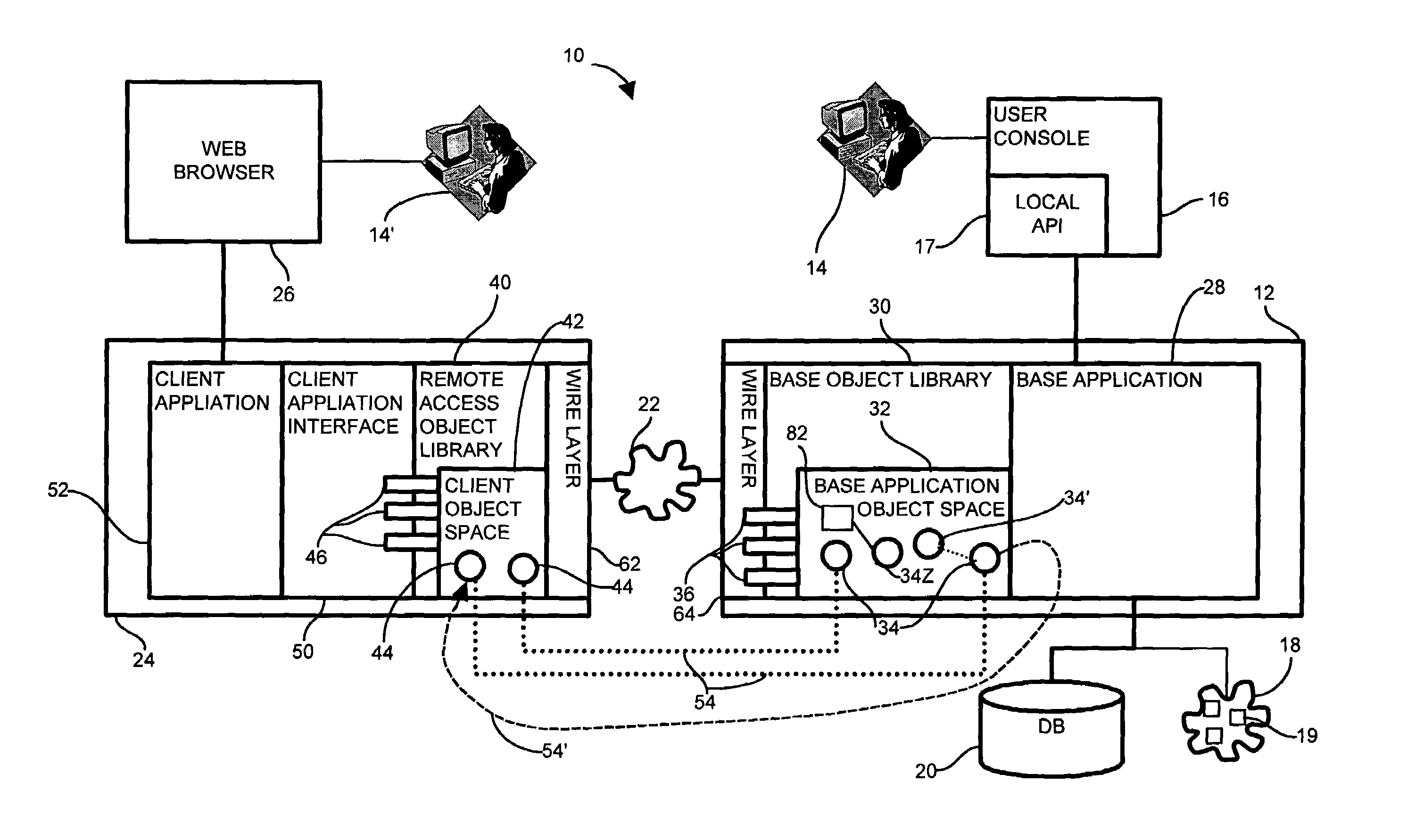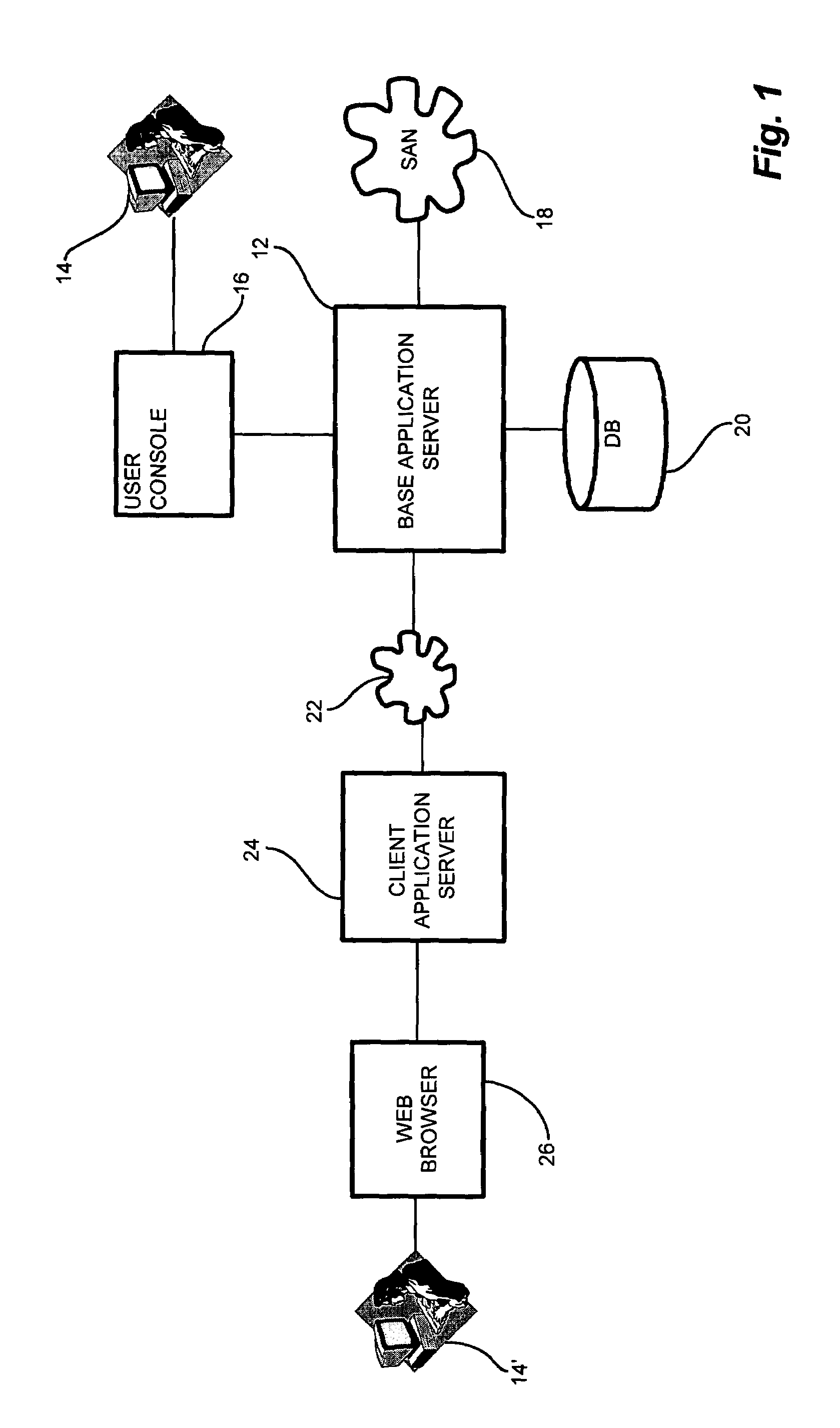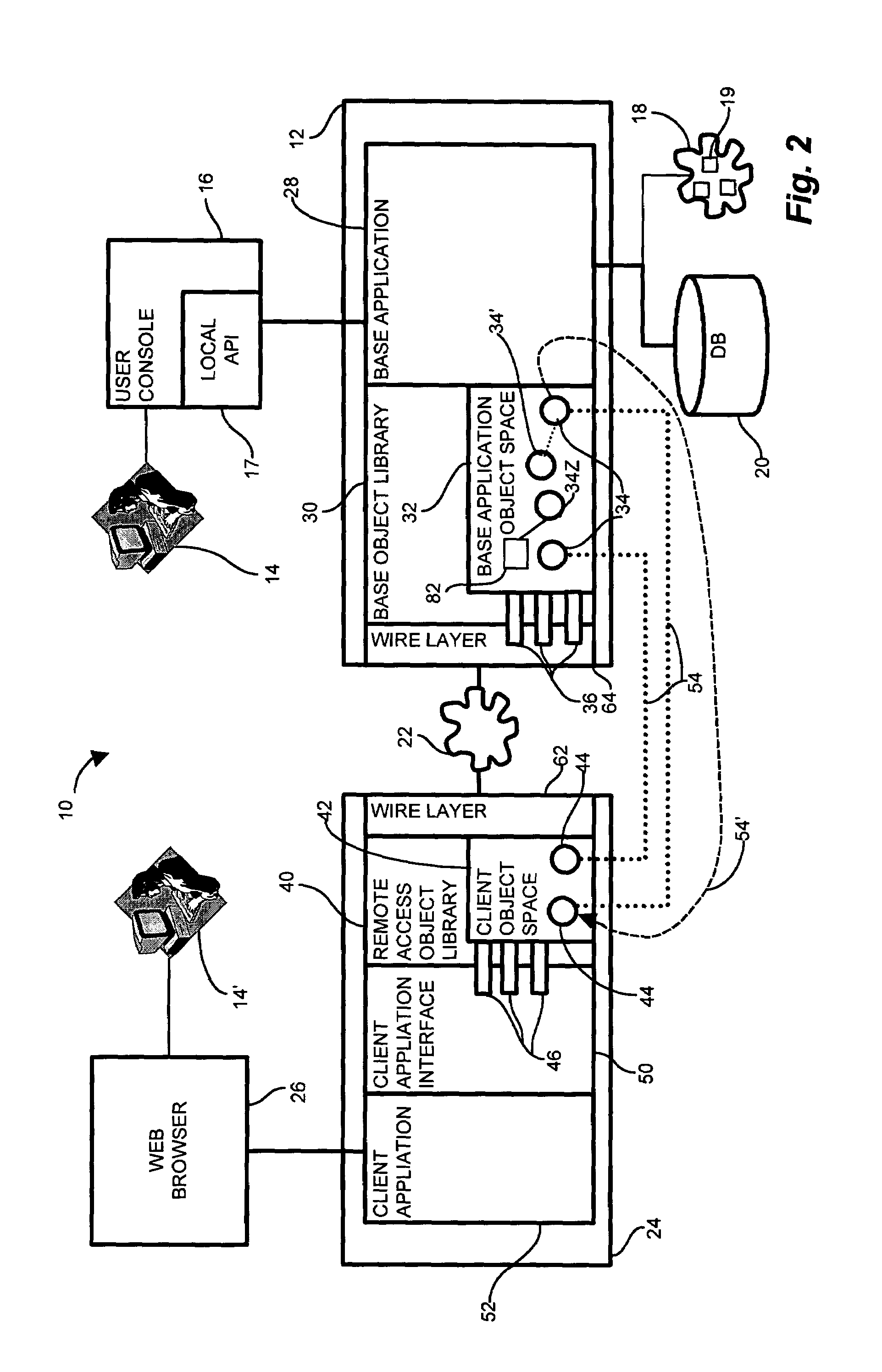System and methods for deploying and invoking a distributed object model
a distributed object model and distributed object technology, applied in the field of conventional managed information systems, can solve the problems of limited management access to the control center and manageable entities, limited control center access to privileged operators, and limited access to the control center and privileged operators, so as to limit potentially damaging access and limit access at compile time and access at runtime.
- Summary
- Abstract
- Description
- Claims
- Application Information
AI Technical Summary
Benefits of technology
Problems solved by technology
Method used
Image
Examples
Embodiment Construction
[0035]In a network management and control system, the disclosed remote access client application interface includes a set of software components, or objects, operable for external user access. Development of a common interface for external user applications allows a remote access object model to define the interface corresponding to an existing base object model, or library. The remote access object model, therefore, defines a generic toolkit upon which a user builds a custom application to suit individual remote access needs. Development of a single remote access object model limits regressive testing and provides a known baseline of tested functionality for the remote interface without compromising the existing base object model, such as the exemplary storage area network management application discussed herein. Limiting the exposure of the objects in the accessible via the client application interface avoids security, integrity, and inconsistency breaches caused by improper invoc...
PUM
 Login to View More
Login to View More Abstract
Description
Claims
Application Information
 Login to View More
Login to View More - R&D
- Intellectual Property
- Life Sciences
- Materials
- Tech Scout
- Unparalleled Data Quality
- Higher Quality Content
- 60% Fewer Hallucinations
Browse by: Latest US Patents, China's latest patents, Technical Efficacy Thesaurus, Application Domain, Technology Topic, Popular Technical Reports.
© 2025 PatSnap. All rights reserved.Legal|Privacy policy|Modern Slavery Act Transparency Statement|Sitemap|About US| Contact US: help@patsnap.com



